Hello All, we’d like to tell a bit about our visit to wondrous CUBA. We found it to be a very visually beautiful country. The water of the Caribbean is turquoise, the island is green and lush and the sky is a deep blue. Havana is an interesting sight to behold. After landing at the airport, we hired a taxi to take us to our “Casa Particular” which means private house in Spanish. These are small private properties, kind of like B&Bs that are family owned and rent rooms out to tourists. Many of them also serve breakfast. Ours was Casa Maria y Pedro and was owned by two brothers and their wives. Isaac and Ray and their families took great care of us there. We chose a Casa Particular because we wanted to support the people of Cuba directly and not a large corporate hotel. We were very happy there during our Seven Days in Havana.


Sevillia Hotel Lobby 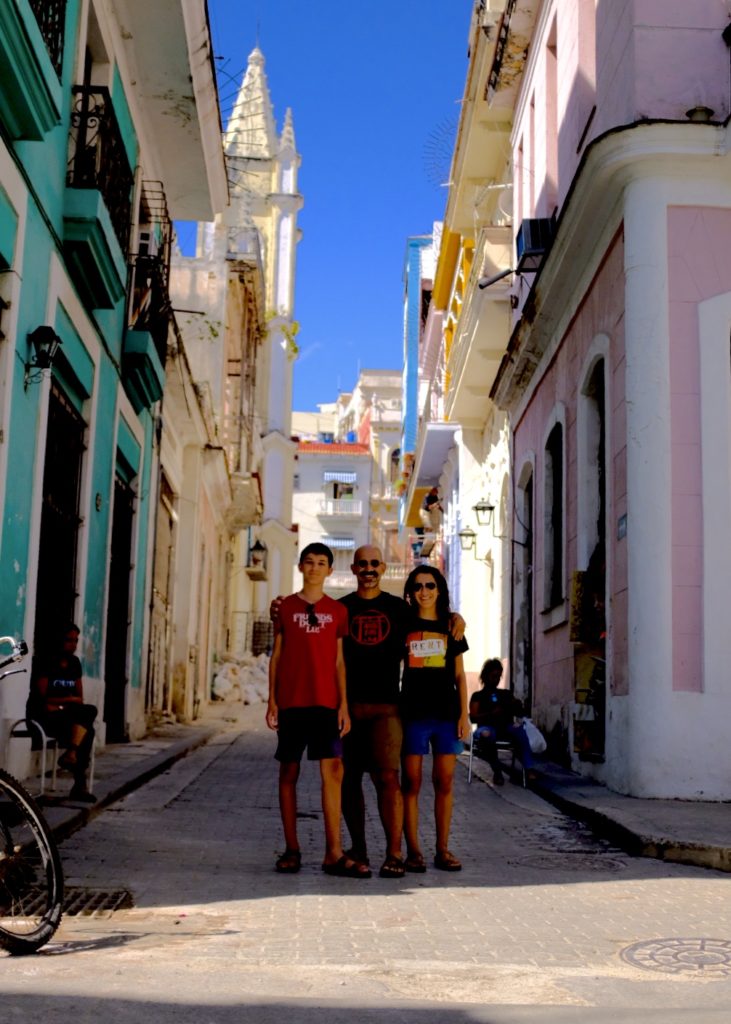








Seeing the sights in Havana
I have heard many times that traveling to Cuba is like going back in time. That is true to an extent. Many things there look untouched since 1960 or so. It’s true that you see “Antique Americana” everywhere in the form of Classic American Cars. There are Chevys, Fords, DeSotos, Edsels, Dodges, Buicks, Cadillacs and others I have probably forgotten from 1920’s models through to about early 1960’s models. Although many of these are privately owned and used daily, a huge majority of them are owned by a Taxi company and can be hired almost anywhere on the street. We hired one of our own to tour us around the city. It was a 1955 Chevy Belair Convertible. It felt great to sit in that old car while enjoying the sights in the open air under the Caribbean sky. Our driver, Javier, toured us around the city for several hours. He showed us the sights and he was a good tour guide.
I eluded that Cuba is known as a less modern country; or like going back in time. This could be due to the US Embargo that has been in effect there since the early 1960’s and also because it is a poor country. Because of the embargo and the isolation of the country, Food, building materials and all the goods that make our lives in the US comfortable are expensive and hard to come by in Cuba. Much of the country doesn’t change or improve over time. A street scene might look like 1965 especially when cars of that era are parked along the street. Everything looks old; the buildings and homes in old town, although architecturally magnificent with rich textural facades, faded bright colors, chipped paint and other rustic details still display an overall charming coat of decades of wear and tear which add to that “old world” feel. All that being said, Cuba is a photographer’s paradise. The street scenes with people and animals are beautiful… especially if you can find a scene void of tourists.

Edificio Bacardi. Ground zero for the Bacardi Rum Empire 
Collage of Doorfronts. Havana 

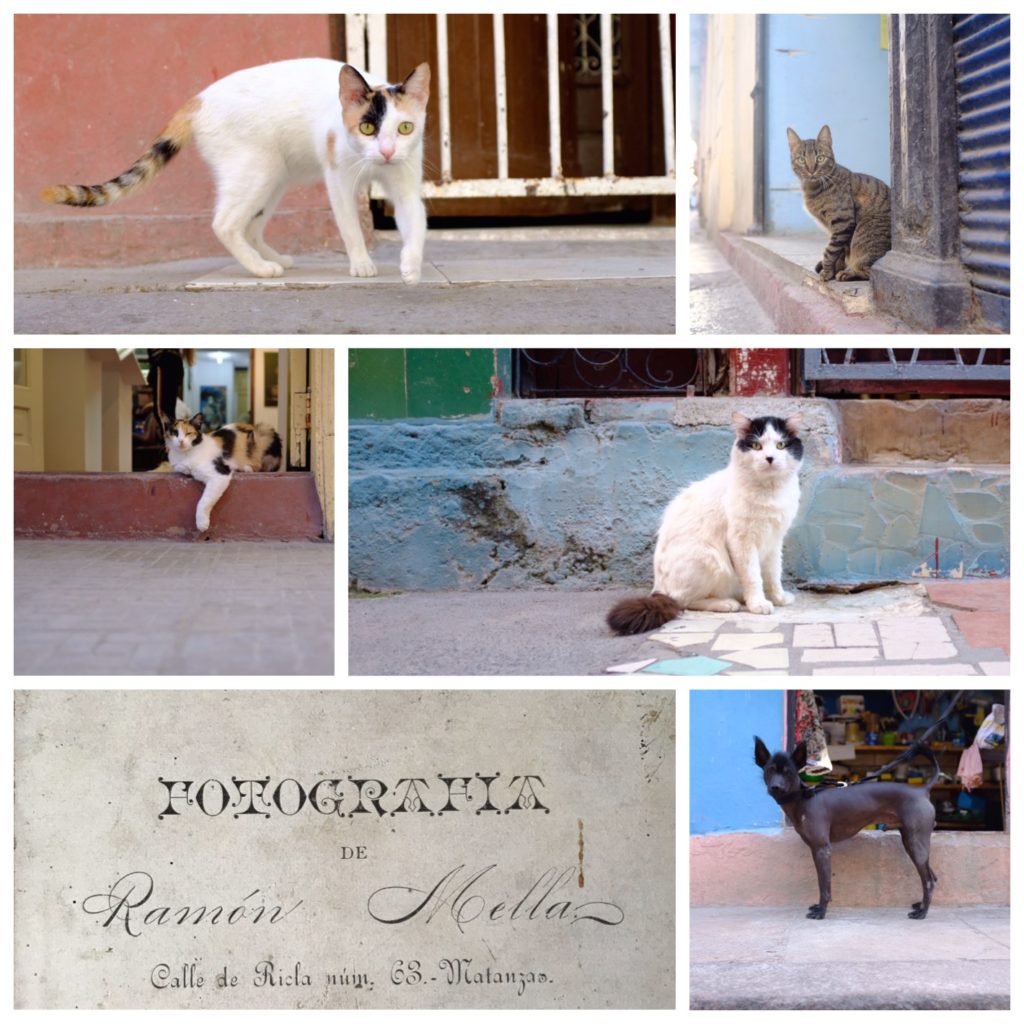


That white and bronze building to the left is Edificio Bacardi 

Neighborhood Kids near Casa Maria y Pedro 


Near the national hotel de Cuba 
Plaza del Angel
Cuba is not all backwards; at least for tourists. It is a machine geared up for the tourist industry. There are plenty of hotels, restaurants and shops to cater to the tourist. And the prices of everything are set to western tourist budgets. Cuba has two currencies; One is for the locals, CUP and one is for tourists, CUC, which is tied exactly to the US Dollar. The prices for everything are in CUC/USD so you know how much you are spending without conversions. We were instantly struck by how expensive Havana is for tourists. A small bottle of water is $2, an entree at a restaurant is $15 and a cab ride a short distance through the city is $10, $15 or even $20. And Havana receives a huge amount of tourists. The current shipping port receives two enormous cruise ships per week and it is being expanded to accommodate eight. A tourist should make every effort to buy goods and services directly from the locals and not from corporate, government/military owned businesses. We did not want to support the Corrupt government of Cuba or its military.
Aside from the high prices for everything, there are two other bothersome issues in Havana. One is the lack of food choices. You’re in good shape if you want to eat all three meals at a restaurant, in fact we found some that we enjoyed very much. But there are no grocery stores or convenience stores where you might go to buy snacks. Food you might buy to eat on the run is almost non-existent. We looked for a bag of peanuts for days but never found one. We did see cookies for sale in many places though if that would satisfy you. The second downside to traveling in Cuba is the internet access which is quite sparse and quite expensive. At first we thought of how refreshing it would be to unplug for the week and get some rest away from electronics and internet. We quickly realized how much we rely on internet and missed it when we really needed it. Things like checking into a flight, sending an important email, checking on a sick relative, being lost in the city and wanting to look for directions on google maps or using the camera in google translate were painful reminders how much we rely on internet in our lives. All these things could be done, but it meant seeking out a hotel or wi-fi hotspot and buying an internet card to get online. Then the issue might be slow internet or internet which wasn’t working at the time. In the end, we managed.
Our trip to Cuba was for the four of us and is a continuation of our education about the world, about culture, about politics, about people and about geography. Our trip around the world is more specifically, for the education of our children, Asher and Ella. We took this trip to Cuba specifically to add another element to the kids’ knowledge of the world. We went to Cuba to learn about the political climate, about Cuba/US relations and history, the culture, the geography, the people, and the Jewish religion there. During our stay, we interacted with many local people. We hired a local man, Javier to tour us around the city and speak about it’s history. We hired a local man, Andy, to tutor Asher in Spanish speaking. Asher and Andy spent many days together touring the city, going to museums, and eating out while speaking exclusively in Spanish. This was to augment Asher’s study of Spanish and to give him real world practice in context and “immersed” in the Cuban Spanish speaking culture. We visited two Synagogues during our Seven Days in Havana. The first was Templo Beth-Shalom Gran Sinagoga de la Comunidad. There we met Moshe, a member of that church. We spent an afternoon with him touring the synagogue and discussing the Jewish community there. Since it was Friday, he invited us to Shabbat services and Shabbat dinner afterward. We enjoyed our religious experience with the Jewish community in Cuba. The second synagogue was the Sinagoga Ortodaxa Adath Israel. We met the Rabbi there, who is also Havana’s sole Kosher butcher. He gave us a tour of the synagogue and we were able to speak to him about the Orthodox Jewish culture in Havana. On our way out, we ran into an elderly man coming into the synagogue. He was quite interested in who we were and why we were there. He was quite charming and engaging so we chatted with him for some time. We found out that he was the Mohel and was returning from a Bris he had just performed. Ofer has great powers of observation and noticed that the gentleman who was not only elderly, but also had quite shaky hands. We all grimaced at the thought of a trembly handed Mohel! 😬

Orthodox Synagogue Adath 


At Templo Beth Shalom 

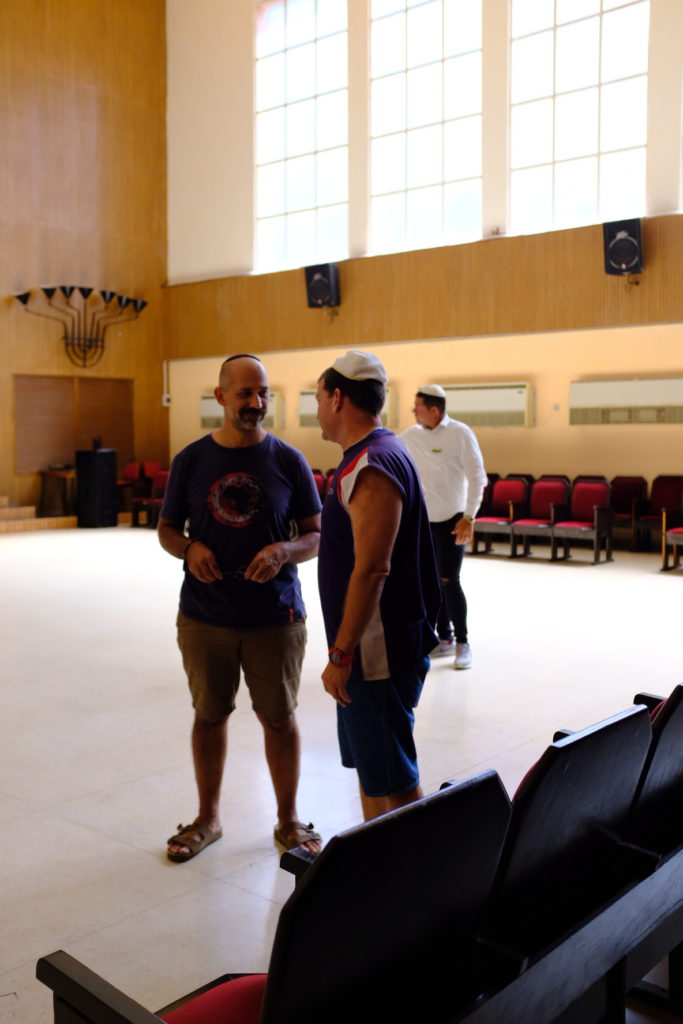
Ofer with Moshe 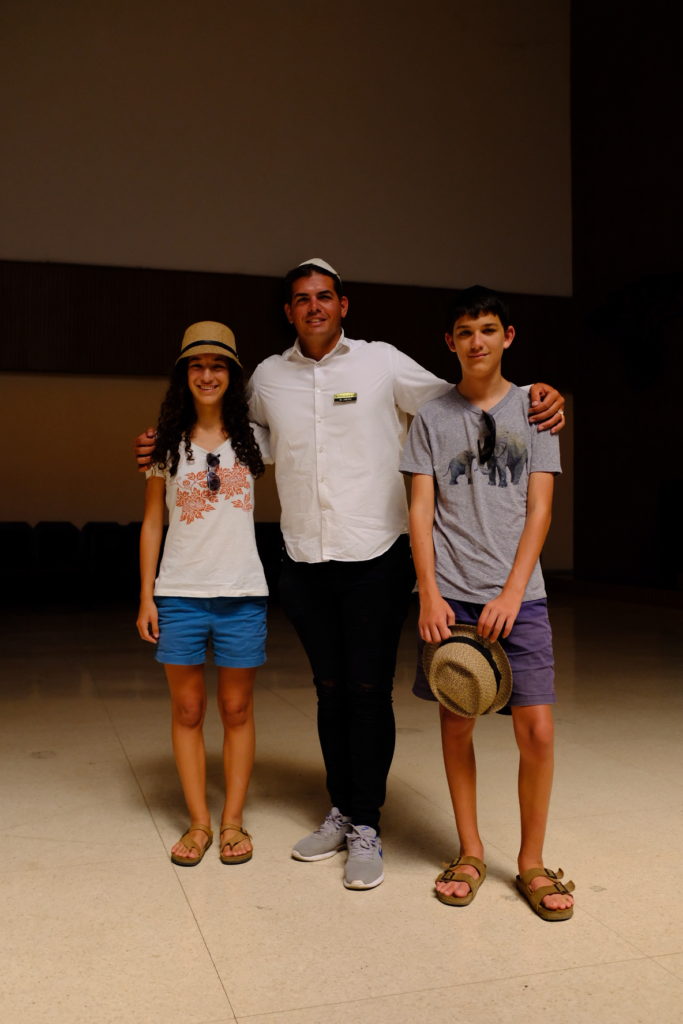
Asher and Ella with Javier at Templo Beth Shalom 

Shabbat Dinner, Templo Beth Shalom 



Banderas de Cuba y Israel. Orthodox Synagogue. 
We were very happy to have been able have our religious exchange with the people of the synagogues to to offer to them some financial support. The Mohel was nearly in tears when we offered to make him and the synagogue a donation. It was a sweet and touching exchange.
Some of the other interesting and educational things we did:
We hired a driver to take us the three hours West to the town of Viñales where the Cuevas del Indio or Indian Caves can be found. We toured the caves on our own by foot and then far into the cave, we found a boat and a lot of water and we exited the cave via boat. It wasn’t as grand as some of the caves in Vietnam, but still an interesting experience.
We visited Lennon Park in Havana and learned that this was a gathering place for young people in the early 1960’s. They went there to socialize and to play music. At that time, the Beetles were very popular in Cuba, but because Fidel Castro had banned American music after the Bay of Pigs, the Cuban Missile crisis and then the US Embargo on trade with Cuba it was a crime to enjoy American music. Those people were subject to arrest and imprisonment for up to 5 years just for strumming out and singing “All my Loving” or “And I Love Her”.
We went to the National Ballet of Cuba at the Gran Teatro to see a performance of La Cenicienta (Cinderella) with music by Johann Strauss. Ofer and I liked it very much. The kids enjoyed it too, but felt that it wasn’t among their favorite performances.
One of the highlights of my trip to Cuba, personally, was the trip to Viñales. In addition to the caves, we also found a tobacco plantation and a hand-rolled Cuban cigar business. One of the owners gave us a tour around the farm and demonstrated the procedures for drying and processing the tobacco leaves which included spraying them with a secret mixture of sugar, honey and liquor and then packing them into palm leaf boxes to ferment for months. After that the leaves are rolled into cuban cigars. Interestingly, we learned that the tobacco plantations in this province are deemed a Unesco World Heritage Site. The plantations must follow strict rules because of this designation which includes a ban on pesticides and the use of motorized equipment in planting and harvesting. In the end, we all were offered our own fully organic Cuban Cigar to smoke and enjoy. Ofer and I enjoyed puffing on these special cigars, and we all surprised ourselves when we suggested that the kids enjoy a puff to have the full experience with us. Ella lit up and took a couple of puffs without hesitation. Asher on the contrary was appalled and disgusted that we were doing this and he refused to partake. Good for you Asher! We support your good choice! We did talk him into holding an unlit cigar in his mouth for a photo op. It was very cute.


Floridita Bar. Hemmingway and Castro 
Asher and Ella with Che Guevara 
Smoking a San Cristobal
Watching the tobacco dry 

Exiting Cuevas del Indio via boat 
At Gran Teatro with the National Ballet of Cuba. “Cinderella” 
At the Tropicana Club. It felt like a cruise ship just unloaded nearby. Oh wait! It did! 
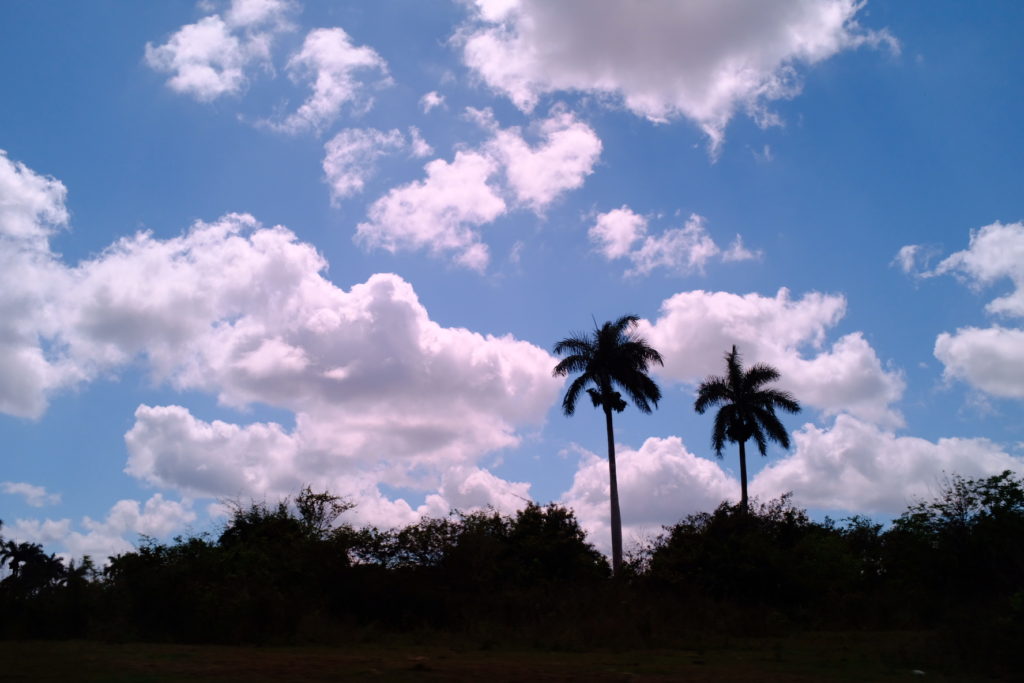


Ella with a San Cristobal 


Viñales Valley 
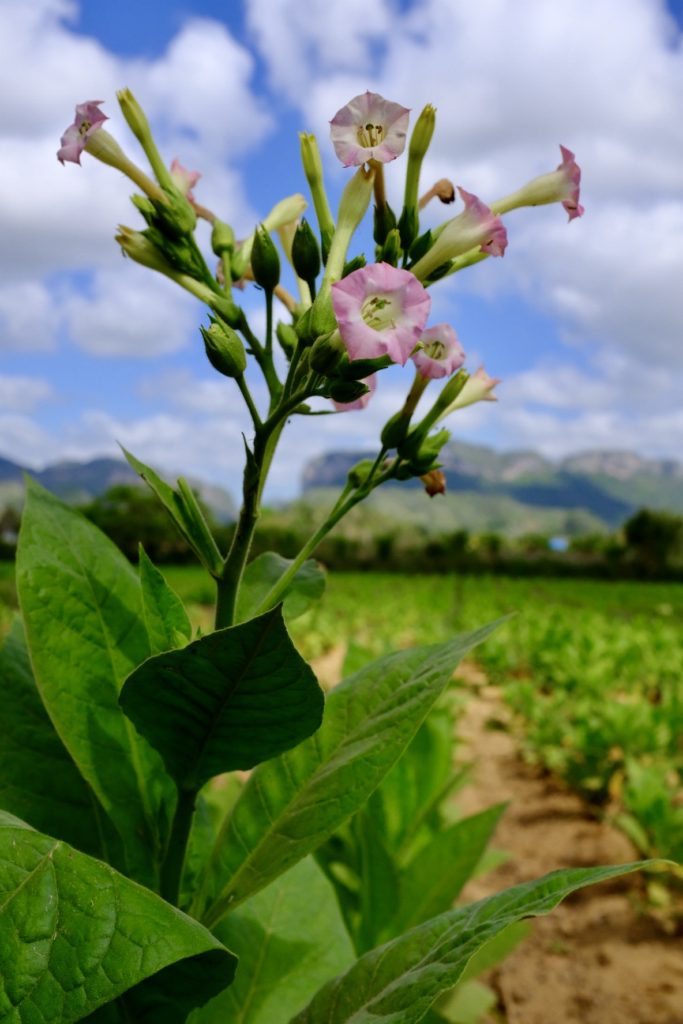
Flowering Tobacco Plant in the Viñales Valley 


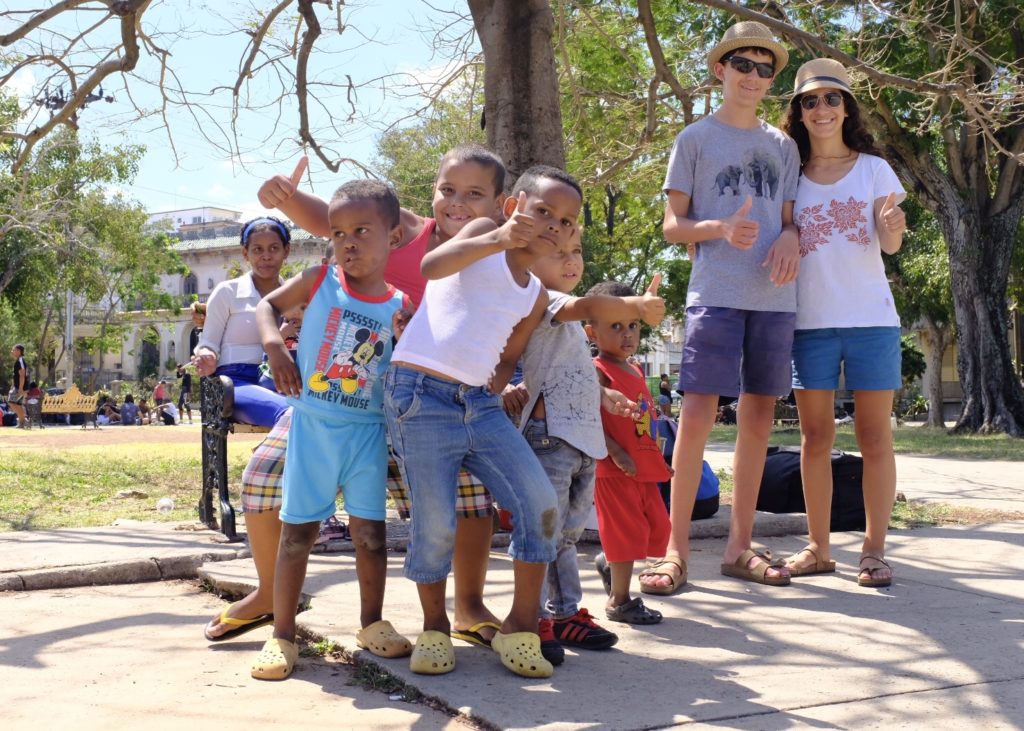

These kids in Lennon Park were thrilled to pose for us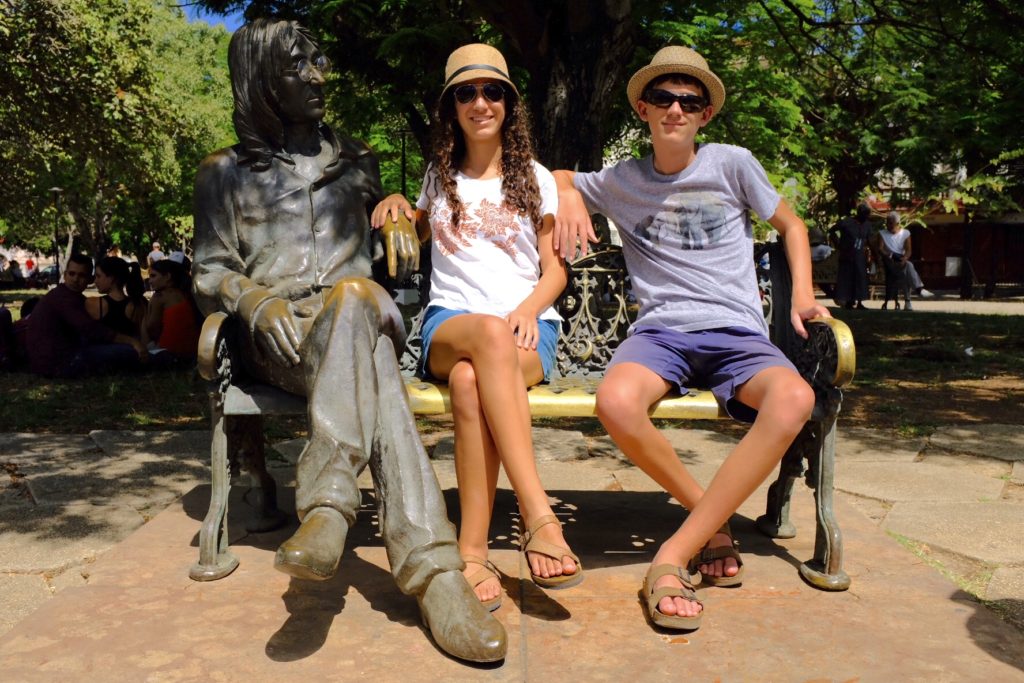
Lennon Park with John Lennon Statue 
Backpackers in Lennon Park 
Fun street photography 
Riding along the coast in our
’55 convertible
With John Lennon 
Revolution Square, Havana 
I suspect this beautiful girl is momma to a litter of puppies nearby….
We really enjoyed almost everything about Cuba. To supplement and enhance our educational experience there, we watched two Netflix series “Cuba Libre” and “Cuba and the Cameraman”. Cuba Libre (2016-2017) directed by Jon Alpert, was a fantastic documentary series and was a great accompaniment to our educational goals in Cuba. We all learned so much about Fidel Castro, Che Guevara, the history of Cuban conflict and revolution and about politics and the Cuban people and so much more. We are very thankful to have been able to learn and experience all that we did in the beautiful country of Cuba!







